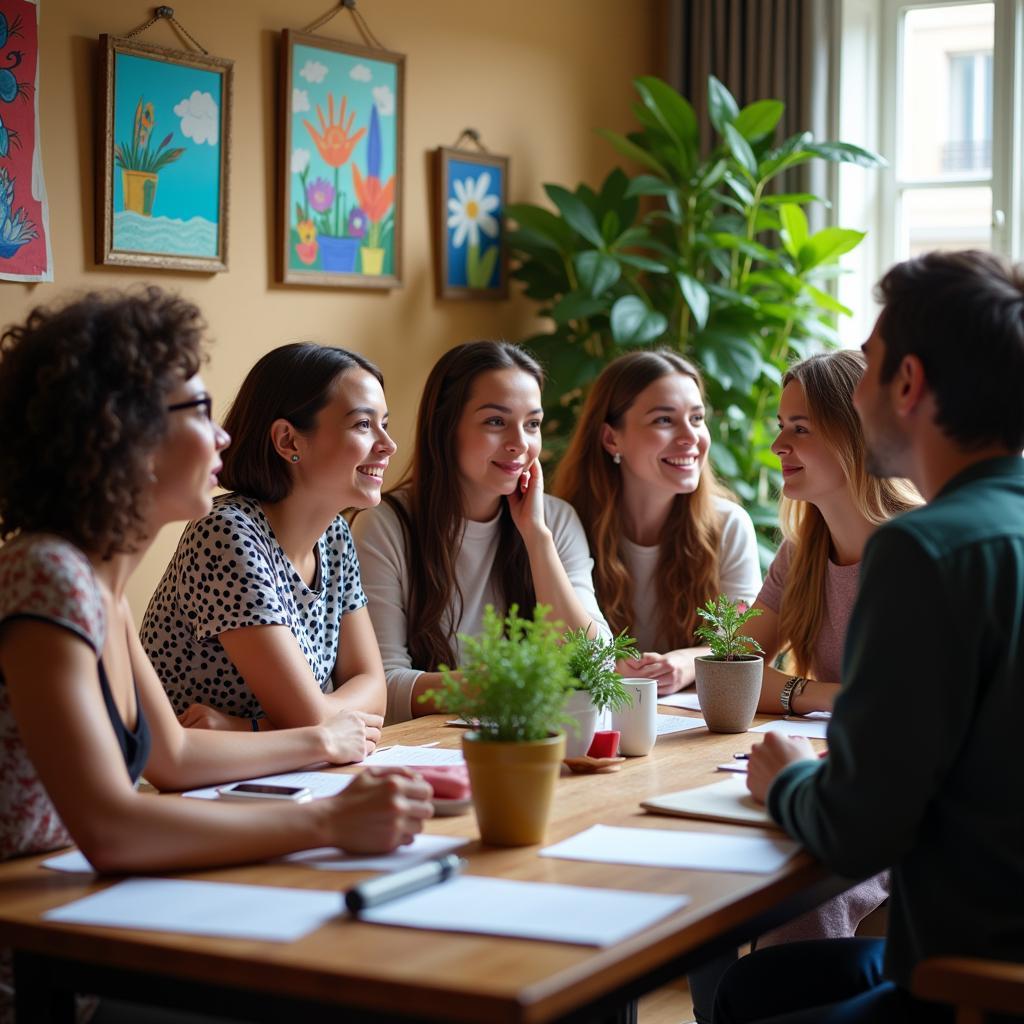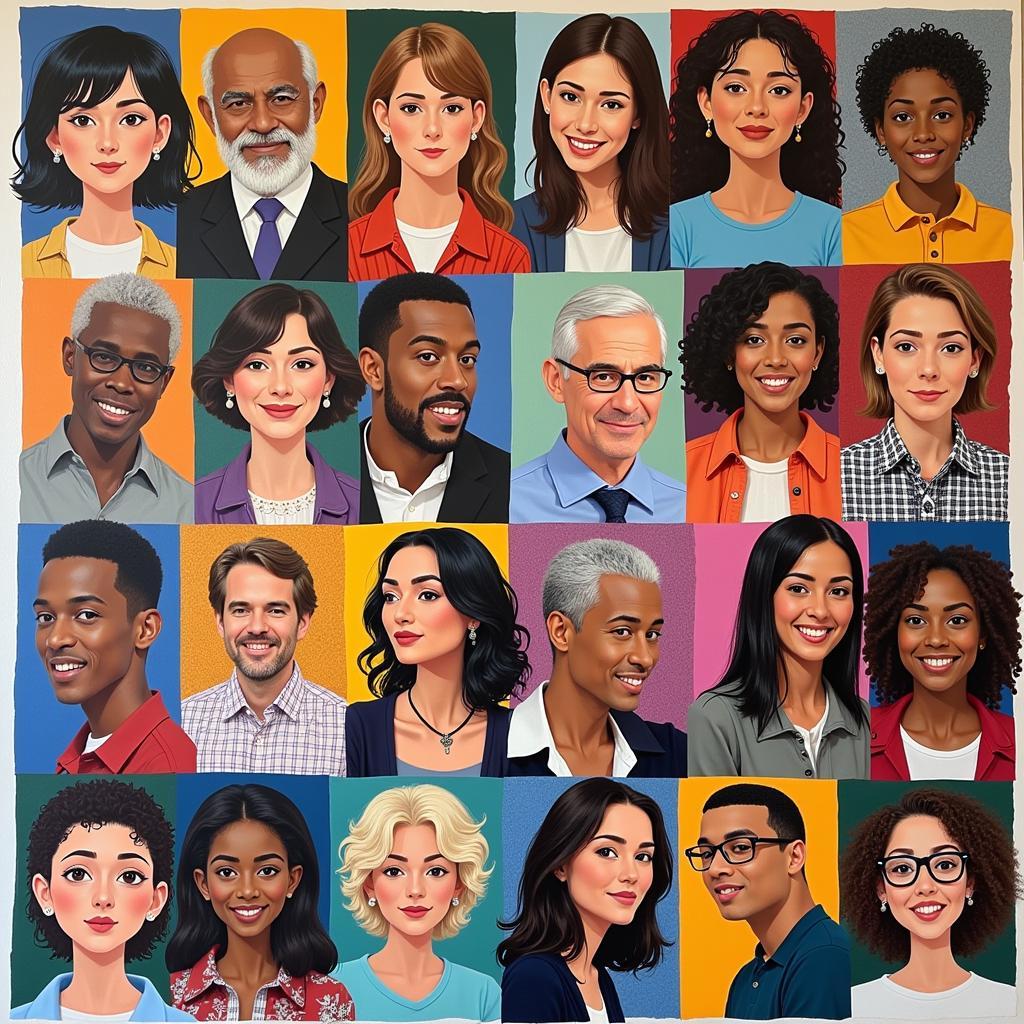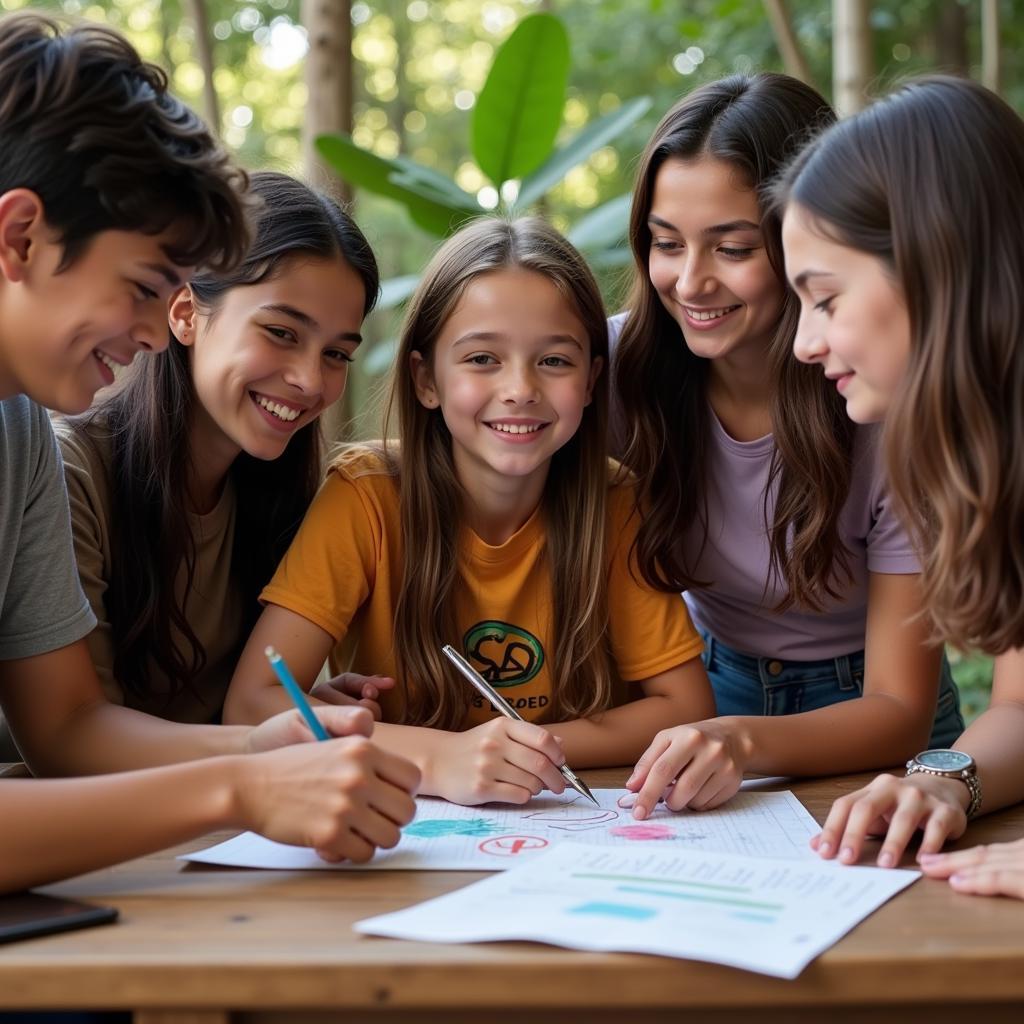The phrase “Design Society” might seem unusual at first glance. After all, societies are complex, living organisms, constantly evolving through the interactions of individuals, cultures, and institutions. How can we possibly “design” something so organic and multifaceted? However, at its core, “design society” speaks to our very human capacity to imagine and create a world that reflects our values and aspirations. It’s about recognizing that while we can’t control every aspect of societal evolution, we can consciously shape its direction by promoting the principles of peace, understanding, and cooperation.
 People from diverse backgrounds engaged in a lively discussion, symbolizing the power of dialogue in fostering understanding and peace.
People from diverse backgrounds engaged in a lively discussion, symbolizing the power of dialogue in fostering understanding and peace.
The Power of Intentional Design
Think about the spaces we inhabit every day: our homes, workplaces, and public areas. Each element, from the arrangement of furniture to the use of color and light, has been intentionally designed to evoke specific feelings and behaviors. Similarly, the principles of design thinking can be applied to shape societal structures and systems.
By thoughtfully considering the ways we communicate, educate, and govern, we can create a fertile ground for peace to flourish. This involves fostering empathy and critical thinking, promoting non-violent conflict resolution, and ensuring equal opportunities for all.
Building Bridges Through Connection
One of the most powerful tools for designing a society for peace is connection. In an increasingly interconnected world, technology provides unprecedented opportunities to bridge cultural divides and foster understanding. By sharing stories, experiences, and perspectives online, we can break down stereotypes and build empathy across geographical boundaries.
 A collage of smiling faces from around the world holding peace signs, representing the interconnectedness of humanity and the shared desire for a peaceful world.
A collage of smiling faces from around the world holding peace signs, representing the interconnectedness of humanity and the shared desire for a peaceful world.
Platforms like “Society for Peace” play a vital role in facilitating these connections. By amplifying voices for peace, showcasing inspiring initiatives, and providing resources for peaceful action, we can contribute to a global movement towards a more just and harmonious world.
Education: The Cornerstone of a Peaceful Future
Education is paramount in designing a society for peace. By equipping future generations with the skills and knowledge to navigate conflict constructively, embrace diversity, and champion human rights, we can break cycles of violence and create a more peaceful future.
This includes incorporating peace education into school curricula, promoting intercultural exchanges, and providing opportunities for young people to engage in meaningful dialogue and collaborative problem-solving.
 A group of young people from diverse backgrounds working together on a community project, symbolizing the power of youth engagement in building a more peaceful future.
A group of young people from diverse backgrounds working together on a community project, symbolizing the power of youth engagement in building a more peaceful future.
Maths in Society: A Tool for Equitable Solutions
Even fields like mathematics, often perceived as purely objective, play a crucial role in designing a just and peaceful society. By using mathematical models to analyze social inequalities, optimize resource allocation, and ensure fair representation, we can create systems that benefit everyone.
For example, data analysis can help identify and address systemic biases in areas like healthcare, education, and criminal justice. By understanding the root causes of inequality, we can develop targeted interventions and policies that promote social justice and reduce conflict.
A Call to Action: Designing Our Shared Future
Designing a society for peace is not a utopian dream but an ongoing process that requires the active participation of individuals, communities, and institutions worldwide. It’s about making conscious choices in our daily lives, challenging injustice, and advocating for policies that promote understanding and cooperation.
It’s about recognizing that we all have a role to play in shaping a more peaceful and just world for ourselves and future generations. Let’s embrace this responsibility and work together to design a future where peace prevails.
Frequently Asked Questions
1. What are some practical steps I can take to contribute to a more peaceful society?
Start by practicing empathy and understanding in your daily interactions. Engage in respectful dialogue with those who hold different viewpoints. Support organizations working to promote peace and social justice. Educate yourself about global issues and advocate for peaceful solutions.
2. How can technology be used to promote peace instead of fueling conflict?
Technology can be a powerful tool for connecting people across borders, sharing diverse perspectives, and promoting intercultural understanding. By using social media responsibly, engaging in constructive online dialogue, and supporting initiatives that combat hate speech and misinformation, we can harness the power of technology for peace.
3. What is the role of art and culture in building peace?
Art and culture have the unique ability to transcend language barriers and connect people on an emotional level. By promoting intercultural artistic collaborations, showcasing diverse cultural expressions, and using art as a medium for dialogue and reconciliation, we can foster empathy and understanding across cultures.
Need Support?
For assistance, please contact our 24/7 customer support team:
Phone Number: 02043854663
Email: [email protected]
Address: Khu 34, Bắc Giang, 260000, Vietnam
We are here to support you on your journey towards building a more peaceful world. Join us, and let’s design a Society For Peace together.